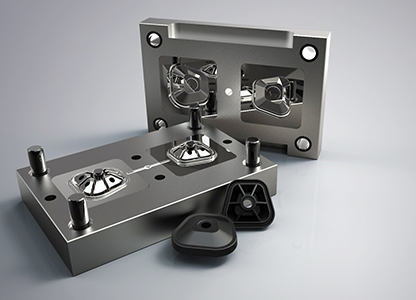How does deep drawing shape metals?

The art and science of deep drawing metals: shaping the world
In the scope of manufacturing, the technique of deep drawing metals holds a special position, serving as a cornerstone for shaping everyday objects and complex industrial components alike. This process, which involves forming a metal sheet into a desired shape through radial tension, showcases the harmonious blend of artistry and scientific precision. Let’s dive into the fascinating world of deep drawing metals and explore how it continues to influence and shape our material world.
Understanding deep drawing metals
Deep drawing is a metal forming process that involves drawing a flat sheet of metal, such as steel, aluminum, or copper, into a die cavity to create a three-dimensional part. The process begins with a blank sheet of metal placed over a die and then a punch presses the metal into the die, forming it into the desired shape. This method allows for the creation of various shapes, from simple cylinders to intricate geometries, by controlling the flow of material and using a combination of tensile and compressive forces.
The artistry of deep drawing
While deep drawing is fundamentally a mechanical process, it also embodies an element of artistry. Skilled craftsmen and engineers leverage their expertise to design the optimal die shapes, analyze material properties, and fine-tune the process parameters to achieve precision and efficiency in shaping the metal. The artistry lies in the ability to foresee potential challenges, optimize geometries for strength and functionality, and create aesthetically pleasing forms that meet the desired specifications.
The science behind deep drawing
At its core, deep drawing is a science that relies on the principles of material deformation, stress distribution, and metallurgical behavior. Engineers employ mathematical models, finite element analysis (FEA), and simulation software to predict the behavior of the metal during forming, optimize tooling designs, and ensure the structural integrity of the final component. Factors such as material selection, lubrication, blank holder force, and forming speeds are meticulously controlled to achieve the desired outcome with precision and repeatability.
Applications in various industries
The versatility of deep drawing metals makes it a widely used process across various industries, including automotive, aerospace, electronics, and consumer goods. In the automotive sector, deep drawing is employed to fabricate car body panels, exhaust systems, and structural components. Aerospace applications include the production of engine parts, fuselage components, and intricate profiles. In the electronics industry, deep drawing is utilized for manufacturing connectors, sensor housings, and enclosures. The consumer goods sector benefits from deep drawing for producing kitchenware, lighting fixtures, and decorative items.
Shaping the future with deep drawing
As technology advances and materials science progresses, the art and science of deep drawing metals continue to evolve. Innovations in high-strength alloys, composite materials, and advanced forming techniques push the boundaries of what is achievable through deep drawing. From enhancing energy efficiency in vehicles to revolutionizing medical device manufacturing, deep drawing plays a pivotal role in shaping the future of numerous industries.
Conclusion
Deep drawing metals exemplifies the perfect synergy between artistry and scientific discipline, showcasing the transformative power of metal forming processes in modern manufacturing. As we continue to unlock new possibilities and push the boundaries of what is achievable, the art and science of deep drawing metals will undoubtedly remain a cornerstone in shaping the world around us. Whether in everyday objects or high-tech applications, the impact of deep drawing reverberates through diverse industries, leaving an indelible mark on our built environment.
By understanding and appreciating the intricacies of deep drawing metals, we gain a deeper appreciation for the craftsmanship and innovation that drive progress in the manufacturing sector. Let us celebrate the artisans and engineers who continue to shape our world through the elegant fusion of creativity and scientific rigor in the art of deep drawing metals.

Discover related Insights
Stay up to date with our latest articles.




